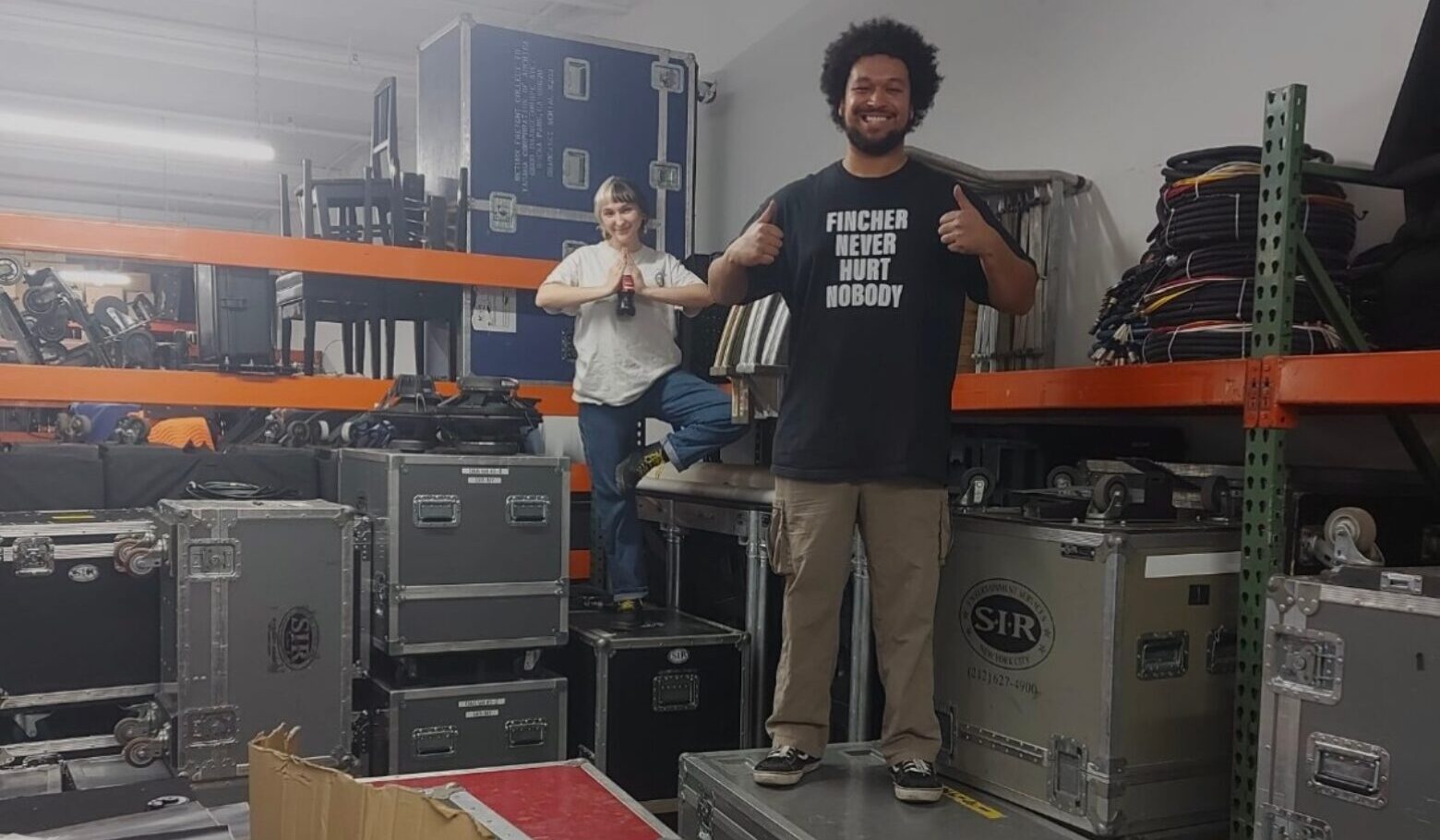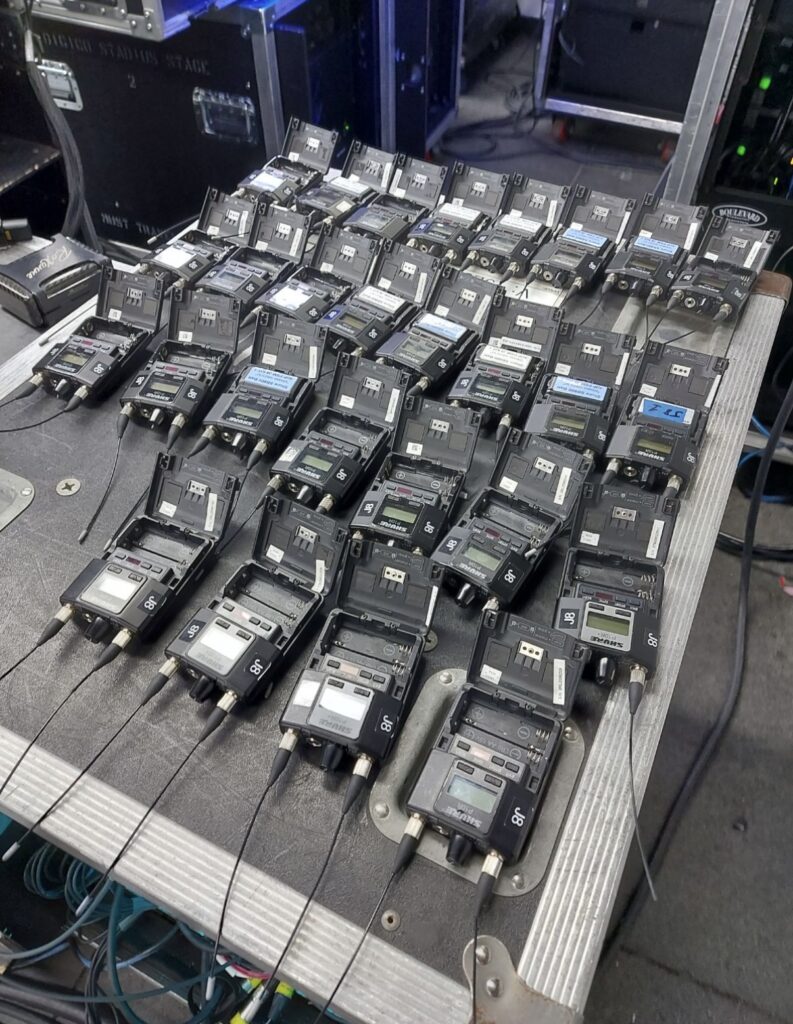From Stage to Screen – My First Days with Live TV

Recently, I’ve found myself taking baby steps into the world of live television, including shows like Saturday Night Live and The Tonight Show with Jimmy Fallon. Having worked in many concert venues and theaters, I thought I had a pretty good idea of what I was walking into. But the complexities and precision of live TV are truly something I’ve never experienced before. Navigating this high-stakes world as a newcomer to this career has been an eye-opening challenge.
One of the biggest things I’ve learned is that in live TV, everything must be done correctly, quickly, at the exact right moment, and with total confidence. As an A2 in a TV studio, your role is crucial in ensuring that everything happening on stage is communicated clearly to everyone in the house, including FOH, monitors, and broadcast. At first, I assumed that set changes, commercial breaks, and changeovers were the least of my worries, but soon I realized how intentional each move needs to be, and how crucial it is to be aware of your surroundings. I’ve been told by others that working in a live TV studio is “like a dance,” where everyone moves around each other in sync, anticipating needs and avoiding disruptions.
This part of the job—finding my space in the studio and learning the flow of TV—has been the most unexpected challenge. As a newbie, it felt strange being one of the people giving orders or running the deck, especially surrounded by experienced stagehands and engineers. I was told that the technicians in the room rely on senses that go beyond the natural five: you need telepathy and intuition. I saw this to be very true! Communication is the heart of any successful collaboration, and in live TV, it’s even more vital.
The more I observe, the more I realize how many moving parts go into the magic of live television. It’s been a challenge finding the balance between being an active part of the team and being respectful of everyone’s space and time. In my first few days, I struggled with just figuring out how to be helpful without getting in the way or stepping in front of a camera! I realized I didn’t have to worry much about the technical aspects of the job, but learning the flow of the show, understanding when to step in, and gauging how I could best support the team.
I’ve since learned that anticipating needs, reading the room, and offering support without disrupting the workflow are key to building confidence in a live television environment. Every individual on the production team plays a vital role, and working together in sync is what makes the end result so successful.

One of the biggest parts of the job is working with talent. You’re their point of contact, and they’ll see your face more than anyone else’s. Whether you’re working with musicians, actors, or hosts, fostering clear communication and a positive working relationship is essential. I’ve learned how important it is to introduce yourself early on, establish a respectful line of
communication, and be clear about what you need from them. This helps prevent confusion and makes everyone feel more confident going into the show.
When working with a guest’s crew, I’ve realized that it’s not just about giving instructions—it’s about listening, too. A positive attitude goes a long way. When the crew feels confident, they perform better, and when the talent feels heard and supported, the entire production runs smoother. A calm, confident demeanor from the crew can make a huge difference in the quality of the show.
Both live television and concerts come with unique challenges and rewards. The precision required for live TV is a stark contrast to the high-energy, improvisational nature of concerts. But at the end of the day, the goal remains the same: to enhance the experience and leave the audience with a memorable, seamless show—whether they’re watching at home or sitting in the stands.
As I continue to grow in this field, I’m realizing more and more that no matter your skill level, stepping into the unknown can be intimidating. But it’s important to let the nerves of a new experience drive you to be better. Growth happens when we step out of our comfort zones, and I’m grateful to be welcomed into these new environments with open arms.
Article by: Elizabeth (Liz) Wilder
Back to Home
Editor's Note: At StageLync, an international platform for the performing arts, we celebrate the diversity of our writers' backgrounds. We recognize and support their choice to use either American or British English in their articles, respecting their individual preferences and origins. This policy allows us to embrace a wide range of linguistic expressions, enriching our content and reflecting the global nature of our community.
🎧 Join us on the StageLync Podcast for inspiring stories from the world of performing arts! Tune in to hear from the creative minds who bring magic to life, both onstage and behind the scenes. 🎙️ 👉 Listen now!
